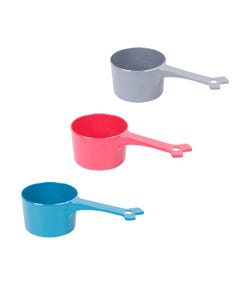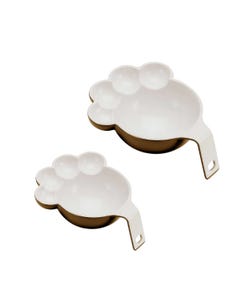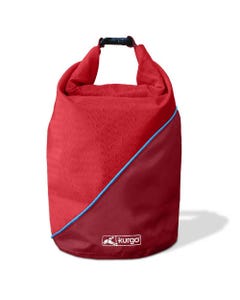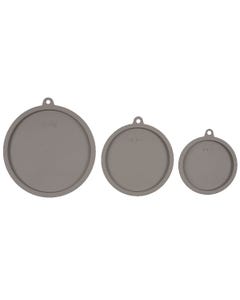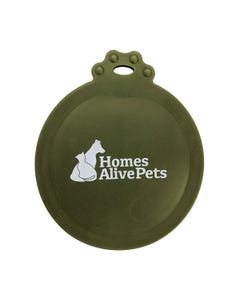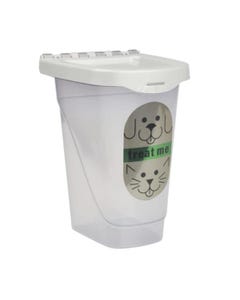Fodd Storage & Scoopts FAQs
What is a dog food storage container?
A dog food storage container is designed to hold your dog's food and keep it fresh and protected from moisture, pests, and other contaminants. Using a food storage container can help extend the shelf life of your dog's food and ensure that it remains safe and nutritious for your pet to eat.
What materials are dog food storage containers made from?
Dog food storage containers come in various materials, including plastic, metal, and glass. Plastic is lightweight and cheaper, while metal and glass containers are more durable and resistant to bacteria.
What is a dog food scoop?
A dog food scoop is a measuring cup designed to help you accurately portion your dog's dry food. Using a food scoop can help prevent under or overfeeding your dog.
What is the best way to store dog food?
The safest way to store dry dog food is in its original bag, inside a dog food storage container. The bag's lining and the air-tight seal of the storage container will ensure maximum freshness and minimize bacteria and contamination risks.
How do I clean my dog food storage container and scoop?
To clean your dog food storage container and scoop, empty any remaining food and wipe away crumbs or debris with a dry cloth or paper towel. Then, rinse the container and scoop it with warm water and dish soap, using a sponge or brush to scrub away any remaining food or stains.
Shop Dog Food Stage Containers and Scoops in Canada
When it comes to feeding your special pet, you don’t always feed the entire can and obviously not the whole bag of dry kibble! That’s why it’s important to properly store your dog or cat food to keep it fresh and safe for them to eat. Improper storage can lead to the growth of bacteria that can cause health issues for your pets.
The best way to store wet dog food is to use a silicone can lid to cover your dog's food. Or store individual meals of canned or raw dog food in lidded metal dog bowls, like Messy Mutts Stainless Steel Bowls.
The best way to store kibble is in a pet food container. A large food storage container can store a whole bag of dry food for dogs. Storing your dog food not only helps to keep them fresh, but keeps your space organized.
Storing dog treats safely can also help keep your pet safe and extend the life of their snacks. Try a Fringe Petshop Treat Jar for a convenient and easy way to store your dog treats or natural chews for dogs.
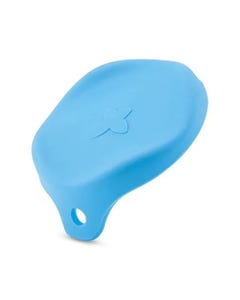
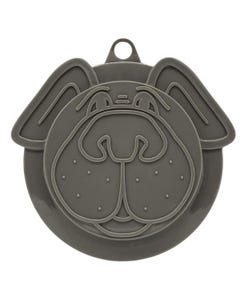
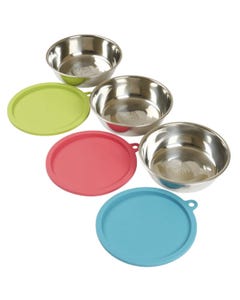 Messy Mutts 6 Piece Box Set (3 Stainless Steel Bowls & 3 Coloured Silicone Lids)Our Price: $27.99 Starting From: $25.19 You Save: $2.80 (10%)
Messy Mutts 6 Piece Box Set (3 Stainless Steel Bowls & 3 Coloured Silicone Lids)Our Price: $27.99 Starting From: $25.19 You Save: $2.80 (10%)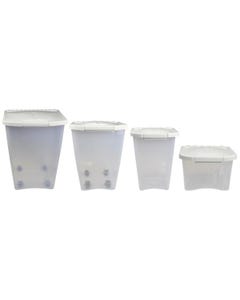 Van Ness Pureness Pet Food Storage ContainersList Price: $20.69 Starting From: $20.49 You Save: $0.20 (1%)
Van Ness Pureness Pet Food Storage ContainersList Price: $20.69 Starting From: $20.49 You Save: $0.20 (1%)
